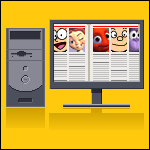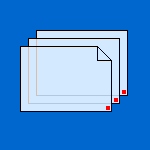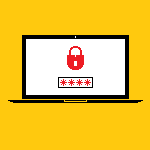Document Management
 |
Electronic Desktop Publishing
- Electronic publishing is an outgrowth of word processing. It combines electronic typesetting and computer generated illustrations with new graphic reproduction technologies to form what has become known as Computer-Aided Publishing (CAP). With the advent of this new technology, the traditional distinction between typesetting and illustration has dissolved. Each discipline is no longer isolated and independent from the one other.
- CAP programs accept graphic data from a wide variety of different sources and integrate it into a single image. These programs turn everyone who uses them into graphic designers because it requires users to first design a page format and then insert and arrange all images and text in a visually pleasing manner. Its major benefit is that it instantaneously displays revisions. You see exactly what you will get before it’s printed. This ability gives designers far better control compared to traditional paste-up methods.
|
 |
Document Management
- Paper documents and electronic files are proliferating at a very fast pace. Software tools that are able to sort through ever increasing quantities of data will be highly prized. The idea of a “paperless” office has all but disappeared. Improvements in printing technology have made it easier to generate more (not less) paper. Data smog is becoming common place.
- When the next generation of document management software comes to market, it will be capable of tracking the revision history of each component of a compound document.
- Within 5 years, document management software will merge with electronic signature and email routing software. The distinction between these various types of software will continue to blur.
- The popularity of web based document management software will increase significantly in the next few years. Clients can be expected to gradually begin using web based document management software to help them track project related documents. Clients will start demanding that all work produced for them be compatible with their document tracking system. Eventually, client document delivery standards will come to dominate many production considerations.
- Note the thrust to develop a common digital document format (i.e. perhaps an advanced variant of current hyperlink languages or a variant of an advanced object oriented file format like Acrobat). Also note increased industry support for an initiative to develop a standard specification that would make document management software interoperable. Both these items will spur the development of web-based project extranets and the deployment of web based document management tools to monitor and route documents through an enterprise. Several different document management software specifications have been promulgated by competing software vendors. No one specification has yet emerged as an industry standard, but this may change in the near future. Once such a specification gains widespread acceptance, document management software built by one developer will be able to communicate effortlessly with competing products. In affect, users will be able to query “foreign” databases and gain access to files being managed by “foreign” software.
|
 |
Electronic Signatures
- Congress has just passed a bill that recognizes electronic signatures as the legal equivalent of wet signatures on paper documents. The bill may soon become law. If and when it does, it would have an immediate and direct impact on the way the AEC industry does business. The ability to instantly or remotely approve business transactions or authorize changes to our contract documents will allow architects and engineers to speed up their design and production cycles.
- Once this law takes effect, we can expect to see all the popular CAD packages incorporate e-signature encryption schemes into their software.
- The new law would be a significant boon to on-line commerce.
- In a related story, several municipalities in Northern California are experimenting with electronic permitting. The project is known as the “Smart Permit Initiative”. The initiative is currently undergoing proof of concept testing. If successful, we should expect to see the Smart Permit process rapidly adopted throughout California. Within the Smart Permit process, design professionals and licensed contractors are encouraged to electronically submit (and resubmit) work for permit review. Participating jurisdictions have agreed to use the same application forms and procedures. The process is predicated on internet document delivery; the use of digital signatures which reduce process cycle time and paper storage for all involved; incorporation of electronic redlining tools allow all project team members simultaneous access to the same set of jurisdictional comments; and after-hours file viewing and project status queries.
- Significant enhancements to the PostScript Document File (.PDF) format can be expected to foster wider use of the Acrobat standard. Acrobat software allows users to create a tamper proof digital snapshot of any file on their computer. These snapshots can be viewed with the aid of a special “.PDF” viewer. This means that the files are transportable since the viewer takes the place of the software that was originally used to create the file. Acrobat files are uneditable. They are however, red-linable. This makes them ideally suited for use when proof is required to show the exact state of a document at the time of delivery. Acrobat documents are also well suited for use on the World Wide Web.
- California can soon be expected to clarify and define acceptable practice related to electronic signatures, file encryption and anti-tampering technology for CAD drawings.
- Note the imminent acceptance of “digital signatures” by many jurisdictions within California (see the Fall, 1999 issue of California Architects) as the legal equivalent of “wet signatures” on all contract documents and project correspondence. Acceptance of digital signatures will hasten the use of digital archives in place of paper archives that are currently the norm. Reduced need for storage space translates directly into lower overhead costs. The push for acceptance of digital signatures by the California Board of Architectural Examiners is part of their larger initiative to speed the building review and permitting process across the state. As a practical matter, acceptance of digital signatures will speed the permitting process by allowing permit requests and their supporting documents to be electronically submitted.
|
(Previous Page)(Next Page)